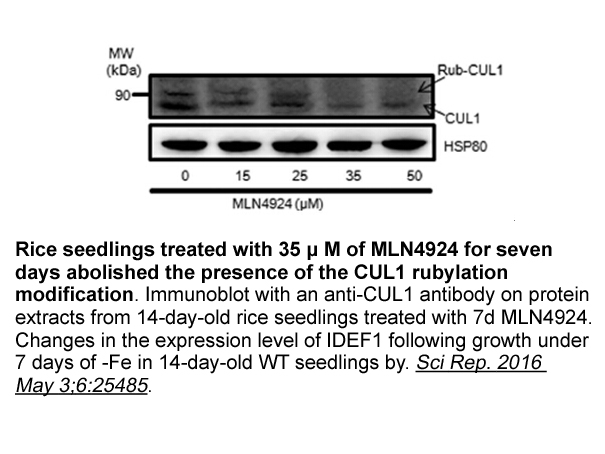Archives
br Effects of BCAAs on glucose metabolism Insulin
Effects of BCAAs on glucose metabolism
Insulin plays an exclusive role in regulation of glucose metabolism, and obesity and type 2 diabetes induce hyperinsulinemia due to insulin resistance. Plasma BCAA concentrations are increased by 14–20% in patients with hyperinsulinemia under overnight fasting conditions [15] and are further increased by ingestion of dietary proteins [16,17]. Based on these findings and the results of animal study with high-fat diet and BCAA supplementation, it was proposed that BCAAs and their metabolites might contribute to insulin resistance [15]. Furthermore, it has been reported that 70 kDa ribosomal protein S6 kinase 1 (S6K1), downstream of mTORC1, negatively regulates insulin signaling under conditions of nutrient satiation by phosphorylation of insulin receptor substrate 1 (IRS1) serine residues involved in insulin resistance [18].
However, we found that hyperinsulinemia strongly decreases BCKDC activities in many tissues of diabetic rats by activation of BDK [[19], [20],  [21]], thereby contributing to increased plasma BCAA concentrations. In Ertapenem sodium salt australia to rats with severe diabetic conditions such as Zucker diabetic fatty (ZDF) rats, who exhibit significantly higher plasma BCAA levels than normal rats, those in which diabetes is gradually developed, such as Otsuka Long-Evans Tokushima Fatty (OLETF) rats, showed normal plasma BCAA levels at the early stage of diabetic conditions with hyperinsulinemia [19], suggesting that an increase in plasma BCAA levels is not associated with hyperinsulinemia. Furthermore, chronic BCAA supplementation improved the deteriorated glucose tolerance in OLETF rats [19], CCl4-induced liver cirrhosis rats [22], and liver cirrhotic patients [14]. These findings suggest that BCAAs have therapeutic potential for the treatment of glucose intolerance, although
[21]], thereby contributing to increased plasma BCAA concentrations. In Ertapenem sodium salt australia to rats with severe diabetic conditions such as Zucker diabetic fatty (ZDF) rats, who exhibit significantly higher plasma BCAA levels than normal rats, those in which diabetes is gradually developed, such as Otsuka Long-Evans Tokushima Fatty (OLETF) rats, showed normal plasma BCAA levels at the early stage of diabetic conditions with hyperinsulinemia [19], suggesting that an increase in plasma BCAA levels is not associated with hyperinsulinemia. Furthermore, chronic BCAA supplementation improved the deteriorated glucose tolerance in OLETF rats [19], CCl4-induced liver cirrhosis rats [22], and liver cirrhotic patients [14]. These findings suggest that BCAAs have therapeutic potential for the treatment of glucose intolerance, although  further studies are warranted to clarify the relationship between BCAA catabolism and insulin resistance.
further studies are warranted to clarify the relationship between BCAA catabolism and insulin resistance.
Energy metabolism in muscle and BCAAs
It is thought that BCAA catabolism is initiated mainly in muscle tissues because of the high BCAT activity and large tissue mass in the body (as described above) suggesting the contribution of BCAAs to energy metabolism during exercise. It has been reported that chronic supplementation of an amino acid mixture with high (∼60%) BCAA contents promoted mitochondrial biogenesis in heart and skeletal muscle of middle-aged mice, through increases in the gene expression of mitochondrial transcriptional regulators including peroxisome proliferator-activated receptor-γ coactivator-1α (PGC1α), resulting in an increase in the endurance capacity of the mice [23]. We also observed that chronic BCAA supplementation elevated the activities of mitochondrial marker enzymes (citrate synthase and cytochrome c oxidase) in skeletal muscle of sedentary mice (Xu, Kitaura, Shimomura, unpublished observation).
In order to examine whether BCAAs have a role in adaptation to exercise training, we prepared muscle-specific BDK knockout (BDK-mKO) mice, in which free BCAA concentrations in muscle tissues are less than half of those in normal mice [24]. Two-week running exercise training (1 h/day, 5 days/week) increased the endurance capacity more than 2 times compared to that before training in both normal and BDK-mKO mice; however, the endurance capacity after training was significantly (12%) less in BDK-mKO mice than normal mice. From the data obtained by the metabolome analysis of skeletal muscle of control and BDK-mKO mice, it was found in BDK-mKO mice that BCAAs were significantly catabolized with great production of branched-chain acyl-carnitine, and that the levels of many components in the glycolytic pathway was significantly decreased in association with decreased levels of acetyl-CoA, citrate and isocitrate, but not succinate, fumarate or malate, suggesting perturbation of energy metabolism in the muscle of BDK-mKO mice. The reduced content of muscle glycogen was also found in BDK-mKO mice, which may be related with the perturbation of energy metabolism and low endurance capacity, because muscle glycogen content is an important factor determining endurance performance [25]. The accelerated BCAA catabolism may affect glycogen metabolism in the muscle [22]. These findings suggest that sufficient BCAAs are required during training for adequate adaptation of the animals to training [24].